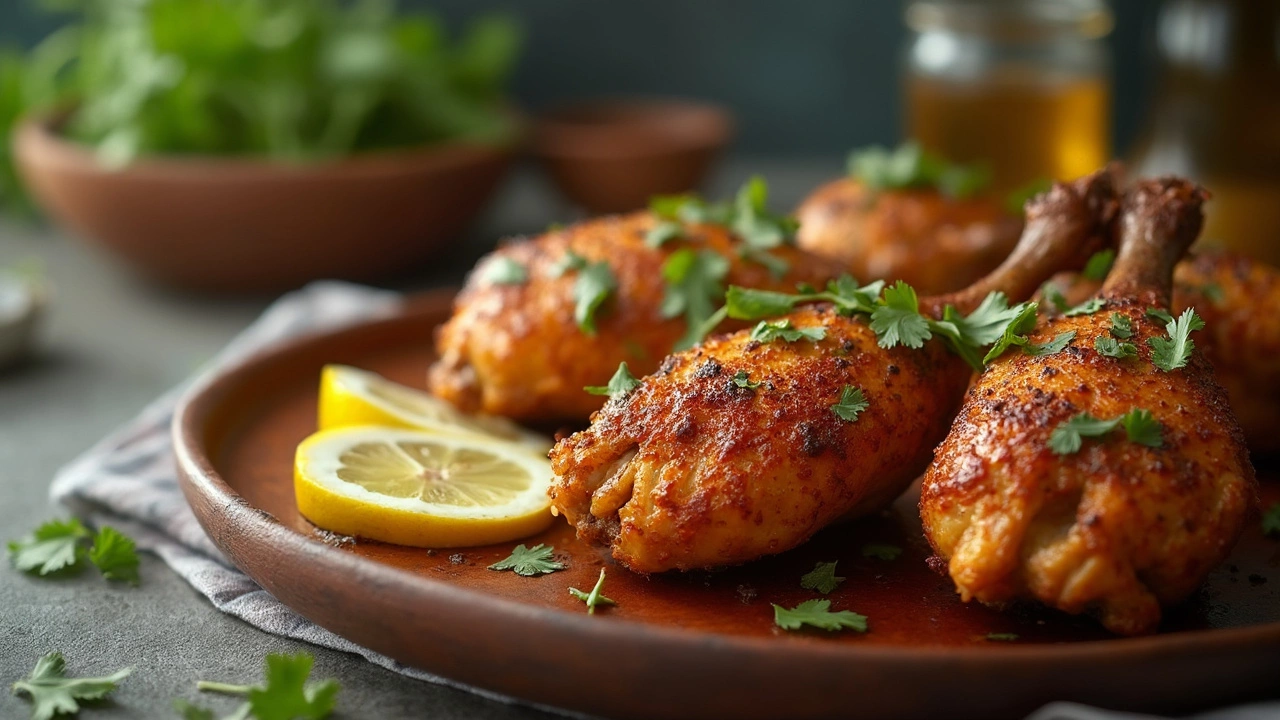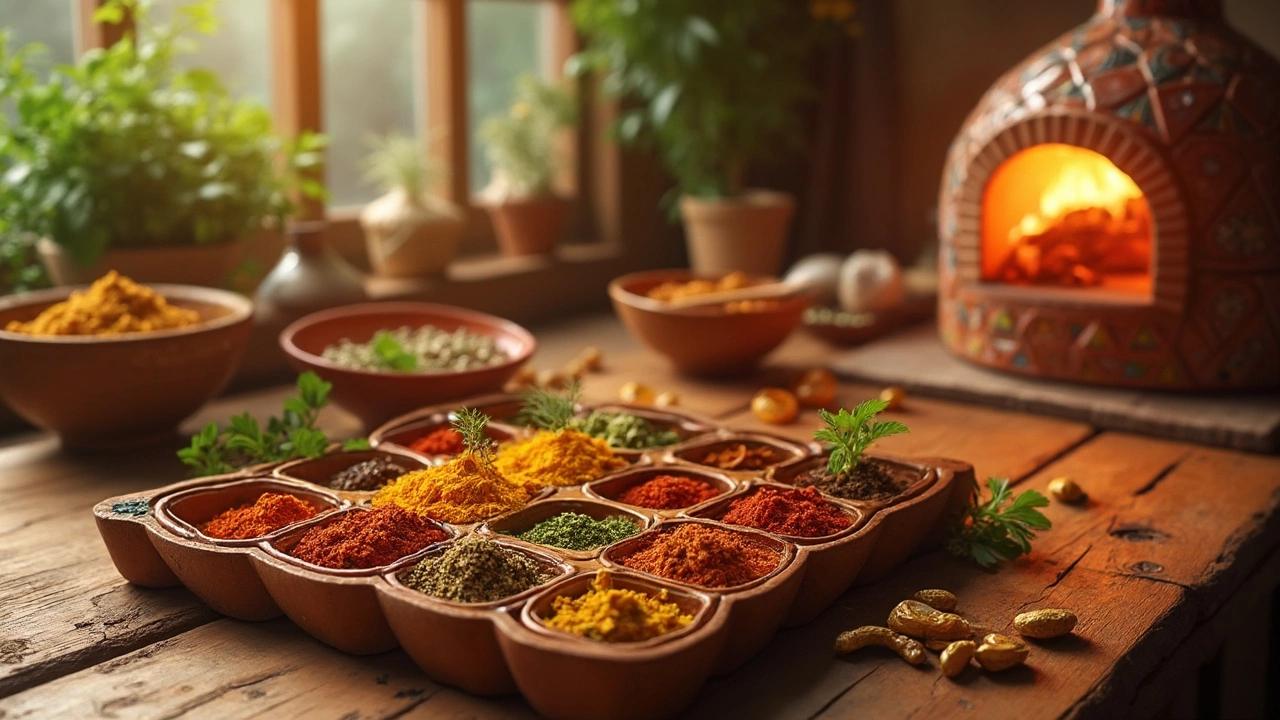Picture this: you're all set to make a delicious tandoori chicken, and you realize you're out of tandoori masala. Panic ensues – or does it have to? Thankfully, you don't need to abandon your culinary plans. With a few simple spices already lurking in your pantry, you can concoct a blend that comes close to the familiar tandoori flavor.
So, what goes into making an effective substitute? Typically, tandoori masala includes a mix of coriander, cumin, and paprika, among others. These spices are not only common in many kitchens but are also easy to play with. This means you can adjust quantities to suit your personal taste or cater to different preferences at the dining table.
But before we get into the nitty-gritty of mixing spices, let's explore why tandoori masala is so beloved. It breaks down cultural boundaries with its complex mix of spices that create a dance of flavors—smoky, spicy, and slightly tangy.
- Understanding Tandoori Masala
- Common Spice Substitutes
- Homemade Masala Blends
- Adjusting Flavor Profiles
- Tips for Perfect Tandoori Chicken
Understanding Tandoori Masala
If you've ever tasted the vibrant flavor of tandoori chicken, you're already familiar with the magic of tandoori masala. This spice blend is at the heart of countless mouth-watering Indian dishes, known for its reddish hue and tantalizing aroma.
So, what's in it? The blend usually combines a mix of coriander, cumin, paprika, turmeric, and garlic powder, delivering a balance of warmth and zing. Some variations might include exotic spices like cardamom or ginger, elevating the depth of flavor. The characteristic red tint often comes from the addition of Kashmiri red chili powder, which also infuses a mild heat.
The Role of Tandoori Masala in Cooking
Traditionally, tandoori masala is used in marinades. Mixing it with yogurt creates a paste that tenderizes chicken, seeping flavor into every bite. When grilled or baked, it offers that unmistakable charred, smoky taste.It's worth mentioning the health perspective too. The key ingredients are rich in antioxidants. For example, turmeric is known for its anti-inflammatory properties, while cumin aids digestion.
Historical Tidbits
Did you know that the origins of tandoori masala trace back centuries to the Punjab region of India and Pakistan? Cooked in tandoor ovens, these dishes were initially reserved for royalty, eventually making their way to homes worldwide.Overall, this versatile blend is more than a spice; it's a passport to flavor, culture, and history—making it a beloved choice for culinary enthusiasts everywhere.
Common Spice Substitutes
Running low on tandoori masala? You might be surprised how a few simple tweaks can save dinner from turning into a flavorless affair. Let's dig into some common spices you probably already have that can step in when you need them.
Basic Substitute Blend
To start off, you'll want to gather a basic collection of spices. A typical substitute blend for tandoori chicken recipes includes:
- 1 tablespoon of paprika - it adds that signature rich color and a hint of mild sweetness.
- 1 tablespoon of cumin - brings earthy tones to your dish.
- 1/2 tablespoon of coriander - for that slightly citrusy note.
- 1/2 tablespoon of turmeric - imparts a warm, golden hue and subtle bitterness.
- 1 teaspoon of cayenne pepper - only if you enjoy a kick of heat!
Mix these spices in a bowl and voilà, you've crafted a solid alternative.
Adding Smokiness
Craving that smoky flavor? Smoked paprika is your friend here. A small quantity can transform your dish, giving it the deep, smoky element that makes tandoori dishes shine.
For the Adventurous: Garam Masala
If you're feeling a bit adventurous, adding a teaspoon of garam masala can create depth. This spice blend carries warmth with flavors of cinnamon, cloves, and nutmeg that may take your chicken to new depths of flavor.
What's more, these spices often double as star players in other dishes—think chili, curry, or BBQ rubs—making them versatile additions to any pantry. You might just find some new favorite flavor combos while experimenting!

Homemade Masala Blends
Creating your own tandoori masala substitute at home isn't as daunting as it may seem. It's about experimenting and balancing the right spices that bring out that classic taste.
The Core Ingredients
The heart of any tandoori masala is its core ingredients. Most recipes will call for coriander, cumin, turmeric, garlic powder, and paprika. These staples are usually hiding somewhere in your spice cabinet, and together, they form the base of your blend.
- Coriander: Adds a fresh, citrusy flavor.
- Cumin: Brings warmth and earthiness.
- Turmeric: Offers color and a slight bitterness.
- Garlic Powder: Provides a savory kick.
- Paprika: Delivers a mild sweetness and color.
Add a Touch of Heat and Sweet
Depending on your preference, add cayenne pepper or chili powder for that extra spicy punch. If you prefer a bit of sweetness to balance the heat, a dash of cinnamon or even a pinch of sugar can work wonders.
Mix and Store
Mix about two tablespoons each of coriander and cumin, one tablespoon of paprika, and half a tablespoon of turmeric and garlic powder. To this blend, add cayenne pepper or chili powder to your taste, and don't forget the optional pinch of cinnamon or sugar. Store this mix in an airtight container for up to six months, keeping it fresh for whenever you're planning your next tandoori chicken recipe.
This homemade blend offers flexibility, letting you tweak quantities to suit your family's taste buds, and helps you learn more about how each spice contributes to the overall flavor. Who knew running out of tandoori masala could lead to such a great kitchen discovery?
Adjusting Flavor Profiles
When you're crafting your own tandoori masala substitute, it's not just about tossing spices together; it's about finding that perfect harmony. The goal is to echo the complexity of the original tandoori chicken recipe, even if you're using different spices.
Start with the Basics
At the heart of tandoori masala are warm flavors. Begin by mixing equal parts of ground cumin and coriander. These two spices form the base and offer a hint of earthiness that you want to capture.
Adding the Right Heat
The heat level is up to you. Traditionally, kashmiri red chili powder is used for its mild nature and vibrant color, but paprika or cayenne pepper can be good alternatives. Paprika is milder, ideal if you're cooking for kids. Cayenne, on the other hand, packs more punch, perfect for those who prefer heat. Spice mix alternatives let you cater to any palate.
Sweet and Smoky Notes
Add a pinch of smoked paprika or a dash of cinnamon for a subtle sweetness and smokiness that can make your blend stand out. It might not replace the original smoky effect of the clay oven, but it's a good effort toward authenticity.
Balancing the Tart and Tangy
Tandoori masala needs a tangy twist. Ground mustard or dried mango powder (amchur) can introduce that needed zing. If neither is available, lemon juice can be added to the marinade to give it a sharp, tangy edge. Lemon zest might work wonders too!
Make It Your Own
Here's the beauty of creating a homemade masala blend: it's entirely customizable. Perhaps you want to add black pepper or ginger for extra warmth. Feel free to experiment with ratios and even incorporate other spices you love. The kitchen is your playground, and these substitutes open up new ways to enjoy the classic flavors you crave.
Experimentation isn't just encouraged—it's necessary. Before you know it, you could be the creator of a tandoori masala that's uniquely yours, and that, my friend, is the true spice of life.

Tips for Perfect Tandoori Chicken
Getting that restaurant-quality tandoori chicken at home isn't just a chef's dream. It's totally doable if you keep a few things in mind. First off, marinating your chicken is key. Give it a long soak—at least 6 hours, though overnight is ideal. This lets the flavors really seep into the meat.
Marination Matters
The magic of tandoori lies in its marinade. Use yogurt to tenderize the meat, and mix in lemon juice along with your tandoori masala substitute for full-on flavor. According to chef an expert in Indian cuisine, "Yogurt is indispensable as it adds a tangy element while ensuring meat tenderness."
"Marination is no lazy affair. The longer, the better!" - Chef Ravi Kumar
Cooking Method
Beyond marination, how you cook the chicken really makes a difference. If you have a grill handy, use it to get that distinctive smoky aroma. Otherwise, a hot oven will work wonders. Preheat to around 450°F to get that sear you're looking for.
Keep it Juicy
No one likes dry chicken. Baste it with oil or ghee during cooking to keep it moist. Flip the pieces halfway through cooking for even heat distribution.
Serving Suggestions
For that authentic experience, serve your tandoori chicken with a side of naan or rice. A fresh salad or sliced onions with a squeeze of lemon add a refreshing touch.
Check for Done-ness
Worried about undercooked chicken? Ensure each piece reaches an internal temp of 165°F. This not only ensures safety but guarantees the chicken is cooked through.
And there you have it! Whether you're battling a spice drought or just trying a new recipe, these tips will help you nail the tandoori chicken recipe every time.
